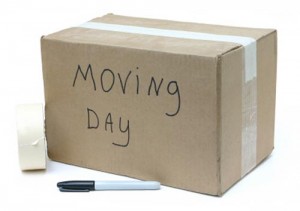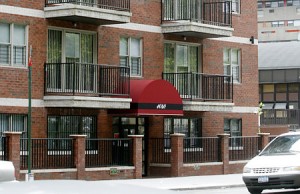Posted by Teresa on April 21, 2013 under Eviction | 
 Despite your best efforts to lease your rental property only to well-qualified tenants who pass your screening process, not every tenant works out. Some tenants stop paying rent. Others refuse to follow the rules. Eventually, you make the decision to evict and bring in a better tenant.
Despite your best efforts to lease your rental property only to well-qualified tenants who pass your screening process, not every tenant works out. Some tenants stop paying rent. Others refuse to follow the rules. Eventually, you make the decision to evict and bring in a better tenant.
But before you evict a tenant, make sure you are following the laws of your state. Failure to follow the proper legal procedures can result in plenty of trouble for you, and an undesirable tenant still living in your property.
There are certain reasons you can legally evict a tenant, including staying past the termination of the lease and non-payment of rent. Having a pet, sub-leasing or allowing guests to stay without your permission are other examples of legitimate cause for eviction. Disliking the appearance of their visitors, the food they cook at home or the church they attend are not legitimate causes.
Each state will have its own detailed requirements, so be familiar with your state’s procedures before you start. You’ll be required to terminate the lease and give notice of eviction, in writing, before you begin the filing process. The number of days for the notice to vacate will vary according to the state law. Some states require landlords to give tenants time to correct the problem; others don’t.
Depending on your reason for terminating the lease, you may issue:
- A Pay Rent or Quit Notice, which gives the tenant several days to pay or move out.
- A Cure or Quit Notice, which gives the tenant time to correct the problem, such as having their sub-tenant move out or finding a new home for the cat.
- An Unconditional Quit Notice, which requires the tenant to move out, with no chance to pay rent or fix the problem. These are generally used with tenants who engage in criminal activity, repeatedly break the rules or fail to pay rent on time.
Once you start the eviction process, you may be in for weeks or months of court appearances. Tenants can defend themselves, or look for errors in your documents that give them time to stay. If a tenant thinks you are being discriminatory against him or her, or are retaliating for complaints they’ve filed, you could have a long case on your hands.
Before you evict, make sure you have documented all of your correspondence with the tenant; keep things completely professional and whatever you do, don’t change the locks or turn off the utilities in order to force a tenant out. That’s illegal.
If you follow the procedures outlined by your state, you can usually evict a tenant for cause in a matter of weeks. If you don’t, you could lose your case. You can always consult with a landlord-tenant attorney if you need to. Good luck!
Legal disclaimer:
The contents of this article are intended for general information purposes only, and should not be relied upon as a substitute for obtaining legal advice applicable to your situation.
Posted by Teresa on April 19, 2013 under Landlord Tips | 
 In most areas, keeping residents and your rental property safe doesn’t require bars on the windows and doors. Common-sense practices can deter thieves from targeting your property, including crime-fighting landscape design.
In most areas, keeping residents and your rental property safe doesn’t require bars on the windows and doors. Common-sense practices can deter thieves from targeting your property, including crime-fighting landscape design.
Properly placing plants, trees, fences and other landscape elements can make your property unattractive to thieves and other lawbreakers. A new approach is called Crime Prevention through Environmental Design, which includes using landscaping and site layout to support natural surveillance, access control, territorial reinforcement, and image and maintenance.
Natural surveillance means keeping trees and shrubs trimmed so that all sightlines are clear for tenants and people walking or driving by. This means no overgrown shrubbery in front of windows or low-hanging tree branches covering walkways.
When you discourage the wrong people from entering your property, you’re practicing natural access control. Simple practices like installing noisy gravel paths and shrubs with spines or prickly leaves can keep would-be criminals away from your rental units. Avoid shrubs and trees that allow easy access to second-story windows and balconies.
Territorial reinforcement can mean a simple fence, which designates the boundaries of the property, as well as well-placed lighting, which will reveal anyone sneaking around at night. Keep plants trimmed around light fixtures for optimum coverage.
Remember that promoting a clean and organized image sends a signal that people who live in and own the property care about it and keep an eye on it. Neglected properties with overgrown landscaping, garbage strewn about and broken sidewalks, shutters, fences and other elements invite more problems.
When it comes time for planting shrubs and trees, allow more room between them. Less is more, especially when the plants grow and fill in. You don’t want to provide any hiding places for less-than-desirable visitors!
Posted by Teresa on April 9, 2013 under Landlord and Tenant FAQs | 
 One question that many new landlords ask is whether or not they are liable when a tenant suffers injuries or damages while living in the rental property. Others wonder if they need landlord insurance, or if their homeowner’s policy will cover them.
One question that many new landlords ask is whether or not they are liable when a tenant suffers injuries or damages while living in the rental property. Others wonder if they need landlord insurance, or if their homeowner’s policy will cover them.
We’re not insurance experts, so if you have questions specific to your situation, consult your insurance agent. But we can offer some common-sense guidelines.
First of all, when you become a landlord and lease out your property, you take on more risks. In many states and cities, landlords are also held to certain rules regarding safety. So if a tenant falls down the stairs, for example, you could be liable for her injuries, depending on whether or not proper handrails, non-skid surfaces and other safety measures are in place.
If you have followed all the rules, the tenant’s personal insurance might cover her losses. But if not, she might try to seek retribution from you.
What about when a water pipe bursts and water leaks in your rental unit, soaking the carpet, damaging the ceiling below or soaking into the drywall? Water can do a lot of damage, as can fire. You need to protect your business and personal assets from the costs of rebuilding from fire, water and smoke damage.
These are three good reasons to have landlord insurance. A liability policy will protect you from damages. However, it’s important to realize—and tell your tenants—that your liability policy will not typically cover their possessions. They’ll need their own renter’s insurance for that coverage. Renter’s insurance will also cover tenants if they are negligent and cause injury or damages.
It’s a good idea to require tenants to have renter’s insurance.
Start your tenant relationship off right by knowing who you’re leasing to. Protect your rental property and assets with tenant background checks. Proper tenant screening will ensure you are leasing to the best possible tenants.
Posted by Teresa on April 5, 2013 under Housing Trends, Legal | 
 Not everyone loves a landlord. Some homeowners dislike having too many rental properties in their neighborhoods. They think that rentals decrease property values and degrade the community.
Not everyone loves a landlord. Some homeowners dislike having too many rental properties in their neighborhoods. They think that rentals decrease property values and degrade the community.
One town decided to take steps to limit the number of rentals allowed in a neighborhood. West St. Paul, Minnesota passed a law, effective January 1 of this year, which permits no more than 10% of homes on a block to be rental properties.
West St. Paul has had more than its share of foreclosures. Home values have fallen. But there’s little evidence that the number of tenants living in its neighborhoods has anything to do with it. Studies provide mixed results; some say higher rates of homeownership raises home values, but others conclude that even large, mixed-income, multifamily rental properties don’t affect the values of surrounding single-family homes.
Besides, with all the foreclosures in the town, where are former homeowners supposed to live? Not in West St. Paul. And not in Madison, Mississippi, which banned all rentals in 2009. In addition, what about homeowners who need to sell a home to take a better job elsewhere, but are unable to sell? What if they’re not allowed to rent their home? How many will walk away from their mortgages and ruin their credit history?
Not surprisingly, homeowners are not taking this lying down. They’re filing lawsuits, claiming that renting one’s own property is a legitimate property right.
Municipalities might mean well by limiting the number of rental properties on a block, but it seems like a recipe for disaster. Americans are demanding more flexible housing, with less upkeep and expense , the ability to move at the end of a lease without penalty and no worries about falling home prices wiping out their equity.
If surrounding homeowners worry about their home values, they can insist on stronger laws that support landlords’ efforts to keep their properties in good shape, and limit noise and other nuisances. They can get to know the landlord and the tenants that own and live in the rental properties in their neighborhoods. Communication is a better way to start than passing laws to prevent property owners from leasing their properties.
Posted by Teresa on April 3, 2013 under Housing Trends | 
 The U.S. Department of Housing and Urban Development and the U.S. Census Bureau recently conducted a survey to gather more data on the country’s multifamily rental properties. Multifamily rentals numbered approximately 2.3 million in the U.S., but little was known on their value, or how they are financed.
The U.S. Department of Housing and Urban Development and the U.S. Census Bureau recently conducted a survey to gather more data on the country’s multifamily rental properties. Multifamily rentals numbered approximately 2.3 million in the U.S., but little was known on their value, or how they are financed.
Recent data shows that approximately one in five American households live in multifamily rental properties, most of which are owned by individuals—not large companies.
The two agencies produced a report that combined existing information and new data on number of units, value, ownership status, mortgage financing, Federal and state benefits, and other information.
A few statistics from the survey:
- 73% of multifamily rentals are comprised of one building.
- 67% are owned by households or individuals.
- 77% provide parking.
- 19% have buildings built before 1920.
- 87% of owners reported making repairs to their properties in 2010 or 2011; the median cost was $699 per unit.
- In multifamily rental properties with 50 or more units, 45% have 20 or more buildings.
- 73% were acquired by their owners before 2005.
It’s clear that not all Americans can or want to buy their own home. For some, renting is a way of life; for others, it’s the only viable option available. Multifamily rental housing, according to the report, is “critical to solving the nation’s affordable housing problems.”
 Despite your best efforts to lease your rental property only to well-qualified tenants who pass your screening process, not every tenant works out. Some tenants stop paying rent. Others refuse to follow the rules. Eventually, you make the decision to evict and bring in a better tenant.
Despite your best efforts to lease your rental property only to well-qualified tenants who pass your screening process, not every tenant works out. Some tenants stop paying rent. Others refuse to follow the rules. Eventually, you make the decision to evict and bring in a better tenant.



